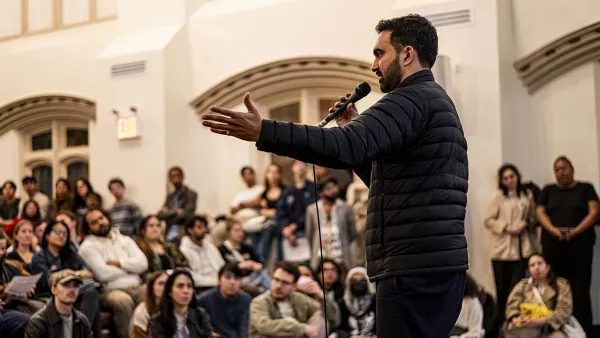A new study examines the widely reported effect of the “New York Minute,” claiming that the new multi-modal nature of New York City’s streets has harkened the obsolescence of previously stated definitions of the non-standard measure of time.
A new report titled “Geographic Determination of Deviatory Isochronism,” from the forthcoming issue of the Journal of Relativity employs several new metrics to expand on previous studies of the widely reported phenomenon of the New York Minute.
The report expands on an earlier study by Johnny Carson, which defined the New York Minute as “the interval between a Manhattan traffic light turning green and the guy behind you honking his horn.” The new study claims that the nature of the New York Minute has changed, even if its duration hasn’t.
From the report’s abstract: “Although cabs have slowed, more transportation occurs at human-scale speeds on bikes, and private automobiles seem to be heeding the ‘twenty is plenty’ guerilla traffic calming campaign, the New York Minute remains as prevalent as ever.”
“I don’t know if it’s hustle or bustle, but New York has still got it!” proclaims the report in a moment of unabashed civic enthusiasm.
As an alternative measure, the report proposes a new definition for the New York Minute: “A $500 bill from Bloomberg Associates.”
FULL STORY: Study Examines the Evolution of the New York Minute

Planetizen Federal Action Tracker
A weekly monitor of how Trump’s orders and actions are impacting planners and planning in America.

Restaurant Patios Were a Pandemic Win — Why Were They so Hard to Keep?
Social distancing requirements and changes in travel patterns prompted cities to pilot new uses for street and sidewalk space. Then it got complicated.

Maui's Vacation Rental Debate Turns Ugly
Verbal attacks, misinformation campaigns and fistfights plague a high-stakes debate to convert thousands of vacation rentals into long-term housing.

In California Battle of Housing vs. Environment, Housing Just Won
A new state law significantly limits the power of CEQA, an environmental review law that served as a powerful tool for blocking new development.

Boulder Eliminates Parking Minimums Citywide
Officials estimate the cost of building a single underground parking space at up to $100,000.

Orange County, Florida Adopts Largest US “Sprawl Repair” Code
The ‘Orange Code’ seeks to rectify decades of sprawl-inducing, car-oriented development.
Urban Design for Planners 1: Software Tools
This six-course series explores essential urban design concepts using open source software and equips planners with the tools they need to participate fully in the urban design process.
Planning for Universal Design
Learn the tools for implementing Universal Design in planning regulations.
Heyer Gruel & Associates PA
JM Goldson LLC
Custer County Colorado
City of Camden Redevelopment Agency
City of Astoria
Transportation Research & Education Center (TREC) at Portland State University
Camden Redevelopment Agency
City of Claremont
Municipality of Princeton (NJ)





























